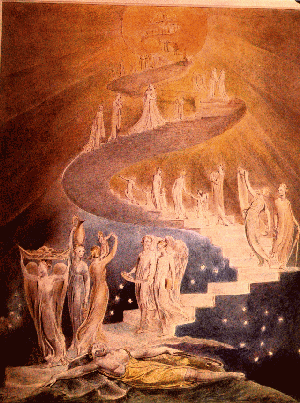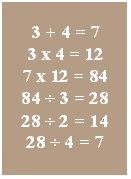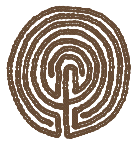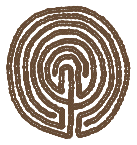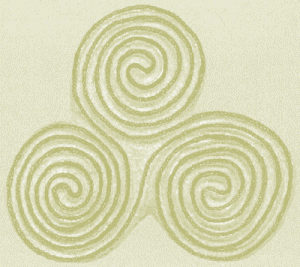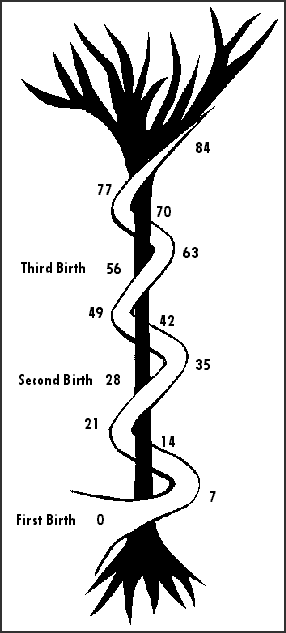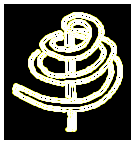|

Figure 1

Figure 2
Figure 3 |
The Imprint of Seven
From a purely rational perspective, a labyrinth
that has seven circuits could be expected to have as its resonate factor the
number seven. If so, how is human nature so structured as to resonate to seven?
What is there about seven that, since time immemorial, has caused it to be
considered sacred?
Jung, towards the end of his life had a
hunch:
I have
a distinct feeling that number
is a key to the mystery . . . .
Not feeling he had years enough left to pursue
this mystery of number, he asked
Marie-Louise von Franz to take over the pursuit for him. Her willingness to
do so resulted
in Time and Number, "reflections leading toward a unification of
depth psychology and physics." (Northwestern University Press, Evanston
1974). Intuitively Jung had perceived that the unity of the psyche and
of matter was to be understood in the single digit numbers as they function
as archetypes. Similarly, the structural imprint of seven upon
a labyrinth may reveal the nature of its function as an archetype.
Jung, from
his contemplations on "the enigma of natural number," concluded that
numbers were capable of “constellating” images, and moreover that number was
the means by which constellated images were “ordered” or “structurally
arranged.” If the numbers inherent to a labyrinth's pattern define or
indicate its archetypal function, then going deeper into the mysteries of
these numbers would seem a worthy pursuit.
Jung had a further perception which may
help explain how the pattern of a labyrinth can serve as an inter-dimensional interface.
His observation was that number functioned as a link between the visible
and invisible worlds of matter and spirit.
In fact,
his hunch about number being the key to the mystery concerned the underlying unity upon which the multiplicity
of the created, manifest world rests, and in which "everything divided and
different belongs to one and the same world"--to the unus mundus. (von
Franz, p 9)
Before delving into the
essential meaning of any number, and wherein its mystery dwells, a primary
consideration is its relationship to the first four integers, each
of which embody a fundamental or foundational, universal principle: As one speaks of unity
as the whole, so its primary division or separation is into two; with three and
four following as the principles of heaven and earth--of things pertaining
to spirit and to matter. Seven, then, as the sum of three and four, relates to an
interactive creative process by which spirit (as three) enlivens form (as
four). According to the Genesis account of the seven “days”
of creation, the creative cycle that seven completes has six active phases followed by a
sabbath of rest in preparation for the beginning of a new cycle.
Three and four, as primary numbers, have
corresponding geometric shapes, with three’s shape being the triangle
and four’s the square. Thus seven takes shape as a combination of a triangle
and square. The triangle, when doubled, becomes the familiar Star of
David—symbolic of the Jewish faith (Figure 1); while the square, when doubled, is a
dominant theme of Islamic design (Figure 2). Triangle and square, however, do not
combine so as to form a familiar or pleasing design, but when they are arranged so as to grow out of each other in a spiraling or
serpentine way, what emerges is a two dimensional representation of the DNA
“ladder of life.” In this combination the principles of three and four can
be seen to generate a movement
that is both dynamic and spiraling. (Figure 3)
When the DNA spiral is visualized as a double helix,
its ladder, reminiscent of Jacob's dream, is one on which the energies of
heaven and earth intermingle. Because of the times in which we live, such images are sorely needed
to replace of the
old dichotomy of spirit versus matter, which for a number of centuries now has dominated
both religious and scientific thought. In Rhythms of Vision, "the changing
patterns of belief," Lawrence Blair writes:
The genetic code, which was only cracked by Drs. Watson and
Crick in the early 1950s has caused great interest as it hints at the
enigmatic connections between “matter” and “spirit”—between organic tissue
and the invisible furnace which moulds it into the stream of biological
evolution. (p.86)
In the no-time zone of
dreams and visions, of angels and archetypes, could Jacob's vision have been an anticipation of the discovery
of DNA's double helix? And did Blake dream the same dream? (Figure
4) Is the spiraling pattern of a labyrinth analogous to the link between worlds
that only seems discontinuous?
|
|




